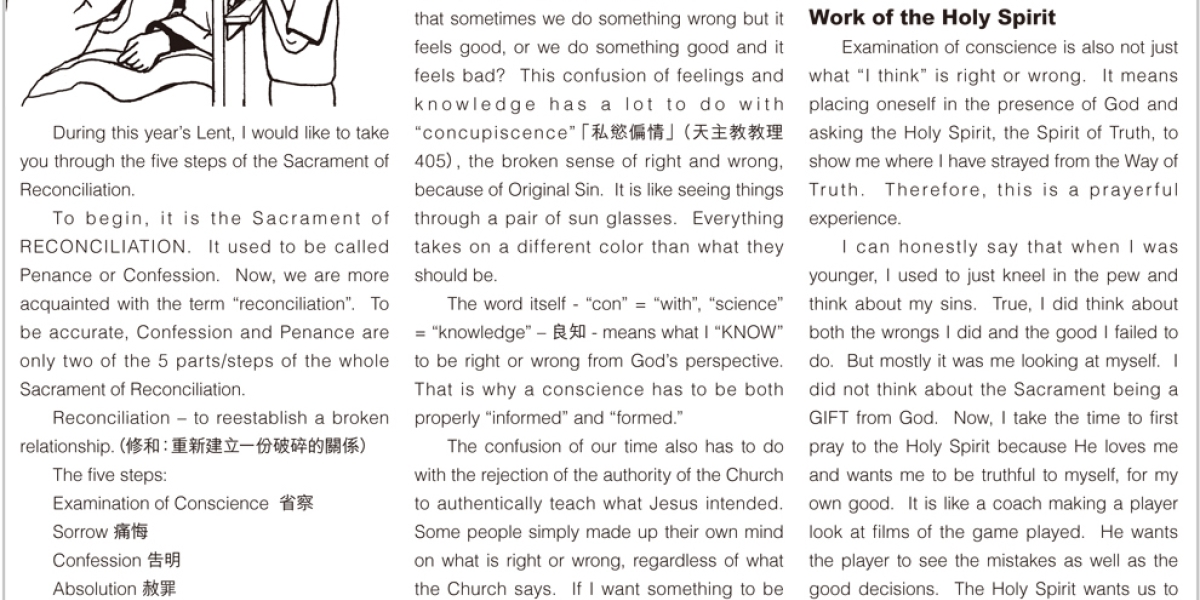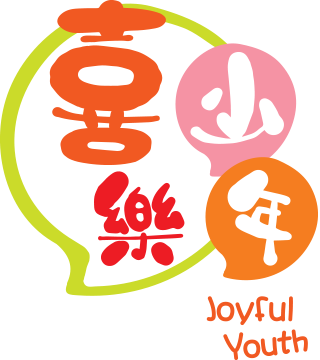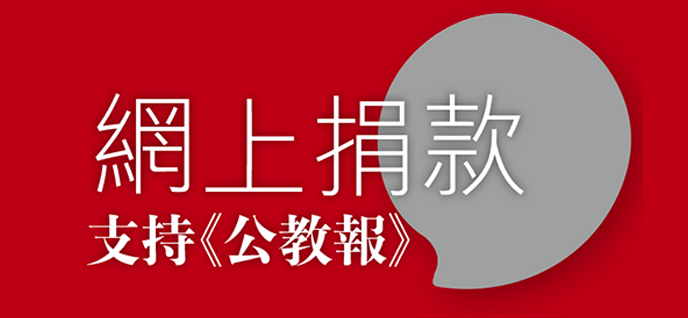
Sacrament of Reconciliation | 修和聖事
During this year’s Lent, I would like to take you through the five steps of the Sacrament of Reconciliation.
To begin, it is the Sacrament of RECONCILIATION. It used to be called Penance or Confession. Now, we are more acquainted with the term “reconciliation”. To be accurate, Confession and Penance are only two of the 5 parts/steps of the whole Sacrament of Reconciliation.
Reconciliation – to reestablish a broken relationship.(修和:重新建立一份破碎的關係)
The five steps:
Examination of Conscience 省察
Sorrow 痛悔
Confession 告明
Absolution 赦罪
Penance 補贖
This week I will focus only on Examination of Conscience.
It is important to first look at the word conscience.
Conscience 良心(或良知)
Too often, the word conscience is used to mean how I “feel” about something. If I feel something is wrong then I have done something wrong. Is that really true? Why is it that sometimes we do something wrong but it feels good, or we do something good and it feels bad? This confusion of feelings and knowledge has a lot to do with “concupiscence”「私慾偏情」(天主教教理 405), the broken sense of right and wrong, because of Original Sin. It is like seeing things through a pair of sun glasses. Everything takes on a different color than what they should be.
The word itself - “con” = “with”, “science” = “knowledge” – 良知 - means what I “KNOW” to be right or wrong from God’s perspective. That is why a conscience has to be both properly “informed” and “formed.”
The confusion of our time also has to do with the rejection of the authority of the Church to authentically teach what Jesus intended. Some people simply made up their own mind on what is right or wrong, regardless of what the Church says. If I want something to be right, I just decide that it is right for me. They say history has shown that the Church has made many mistakes, therefore, why is the Church trying to tell me what to do?
In other words, we have decided that we are the only ones responsible for what is TRUTH! Sadly, many people think this way, and that is why so many no longer go to Confession.
Work of the Holy Spirit
Examination of conscience is also not just what “I think” is right or wrong. It means placing oneself in the presence of God and asking the Holy Spirit, the Spirit of Truth, to show me where I have strayed from the Way of Truth. Therefore, this is a prayerful experience.
I can honestly say that when I was younger, I used to just kneel in the pew and think about my sins. True, I did think about both the wrongs I did and the good I failed to do. But mostly it was me looking at myself. I did not think about the Sacrament being a GIFT from God. Now, I take the time to first pray to the Holy Spirit because He loves me and wants me to be truthful to myself, for my own good. It is like a coach making a player look at films of the game played. He wants the player to see the mistakes as well as the good decisions. The Holy Spirit wants us to see the mistakes we need to correct, guide us in making better decisions so we continue to grow, all for our own enjoyment of life.
Have a blessed Lent!






